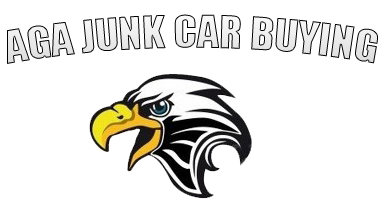Have you ever sat in the driver’s seat of a car and felt overwhelmed by the number of lights, symbols and indicators on the dashboard?
Understanding how to read your car’s dashboard is essential for maintaining the health of your vehicle and ensuring your safety on the road.
The dashboard serves as a command center that offers vital information about your car’s condition and its operation.
From the fuel gauge to the check engine light, each element plays a crucial role in the smooth running of your vehicle.
What do the different symbols on a car dashboard mean?
A car’s dashboard is equipped with various symbols and warning lights that provide important information about the car’s systems and operation.
Understanding these symbols is crucial to driver safety and car maintenance.
Here are some common dashboard symbols and their meanings:
-
Check Engine Light:
This light indicates a problem with the car’s engine or emissions system. It can be triggered by a variety of problems, from minor to severe, and requires immediate attention.
Did you know that ignoring this signal can progressively damage your catalytic converter?
-
Battery light:
This light indicates a problem with the car’s charging system or a weak battery. If it remains on while driving, it may indicate a fault with the alternator or the battery itself.
-
Oil pressure light:
This light warns the driver when the car’s engine oil pressure is too low, indicating possible engine damage. It requires immediate action to avoid serious engine problems.
-
Tire Pressure Monitoring System (TPMS) light:
This light indicates that one or more tires have low air pressure. Driving with underinflated tires can affect handling and fuel efficiency.
-
ABS Light:
The Anti-lock Braking System (ABS) light alerts the driver when there is a problem with the ABS system.
If this light remains on, the ABS system may not function properly in the event of emergency braking.
-
Coolant temperature warning light:
This light indicates that the engine is hot, which can cause engine damage or overheating. Stop and turn off the engine immediately to avoid further damage.
-
Airbag light:
This light indicates a problem with the car’s airbag system.
A malfunctioning airbag system may not deploy in the event of an accident, so it is essential to have it checked.
-
Fuel gauge:
Indicates the amount of fuel remaining in the tank. Refuel when the gauge shows a low level, as running out of fuel can leave you stranded.
-
Seat belt reminder:
This indicator reminds occupants to fasten their seat belts. It is important to obey this warning as it can help save lives in the event of an accident.
By understanding how to read your car’s dashboard, you can stay informed about its condition and keep yourself safe on the road.
Be sure to pay attention to these indicators and take action if any of them remain illuminated for more than a few seconds.
Are all dashboard symbols warnings that something is wrong?
Not all dashboard symbols are warnings that something is wrong.
While it is true that many symbols serve to alert you to potential problems, some dashboard lights are simply informational or indicate normal operation.
For example, the turn signal or high beam indicator lights up when you activate these functions, but it does not mean there is a problem.
Similarly, the cruise control indicator lights up when you use this function.
It is important to familiarize yourself with the specific symbols on your car’s dashboard, both warning and information, to fully understand the functionality and operation of your vehicle.
However, if your car is badly damaged or has parts that no longer work, you may decide to sell it for cash to AGA Cash Junk Cars Inc..
We are one of the best junk car buyers in Chicago and we pay top dollar for any vehicle.
Contact us (312) 401-2157 today for more information.
What symbols are the most important in your car dashboard?
The most important symbols on a car dashboard are those that indicate potential safety issues.
In particular, you should pay close attention to the check engine light, oil pressure light and the battery light.
These three lights can alert you to serious problems with your car’s engine or electrical system and should be checked out immediately.
What should you do if any symbol on the car dashboard lights up?
If any symbol lights up on your car’s dashboard, it is essential that you take immediate action to solve the problem. Here are the steps you should follow:
-
Identify the symbol:
Consult your car’s owner’s manual to identify the specific symbol and what it means. Each car may have a different symbol on the dashboard.
-
Check the severity:
Some symbols, such as the check engine light or oil pressure light, indicate potentially serious problems and require immediate attention.
Others, such as the tire pressure warning light, may be less urgent, but should be attended to soon.
-
Stop in a safe place:
If the symbol indicates a critical problem, stop in a safe place as soon as possible. Do not continue driving if the problem could pose a safety risk.
-
Check basic gauges:
Before contacting a mechanic, check basic gauges such as fuel level, engine coolant or tire pressure to see if they could be the cause of the warning light.
-
Troubleshoot the problem:
If the problem is minor and you feel confident you can fix it, you can try to solve it yourself.
Otherwise, it is best to call roadside assistance or take the car to a trusted mechanic.
-
Don’t ignore the warning:
Ignoring dashboard warning lights can lead to more serious and costly problems.
It is crucial to fix any problems promptly to ensure your safety and prevent further damage to your vehicle.
Can you drive your car with a warning light?
In general, it is not safe to drive your car with a warning light on.
If the cause of the problem is minor and you feel confident that you can address it yourself, you may be able to continue driving cautiously until you have a chance to do so.
However, any kind of warning light indicates an issue that needs attention and should be checked out as soon as possible.
In conclusion, understanding the symbols on your car’s dashboard is crucial to your safety and to maintaining the overall health of your vehicle.
From warning lights that indicate serious problems that require immediate attention, to informational indicators that simply keep you informed about your vehicle’s functions, each symbol plays a unique role.
It is important not to ignore these lights and take immediate action to avoid potential damage.
Remember that a well-maintained car not only ensures a smooth and safe drive, but also extends the life of your vehicle.
Therefore, familiarize yourself with the dashboard, stay informed and always prioritize safety.


